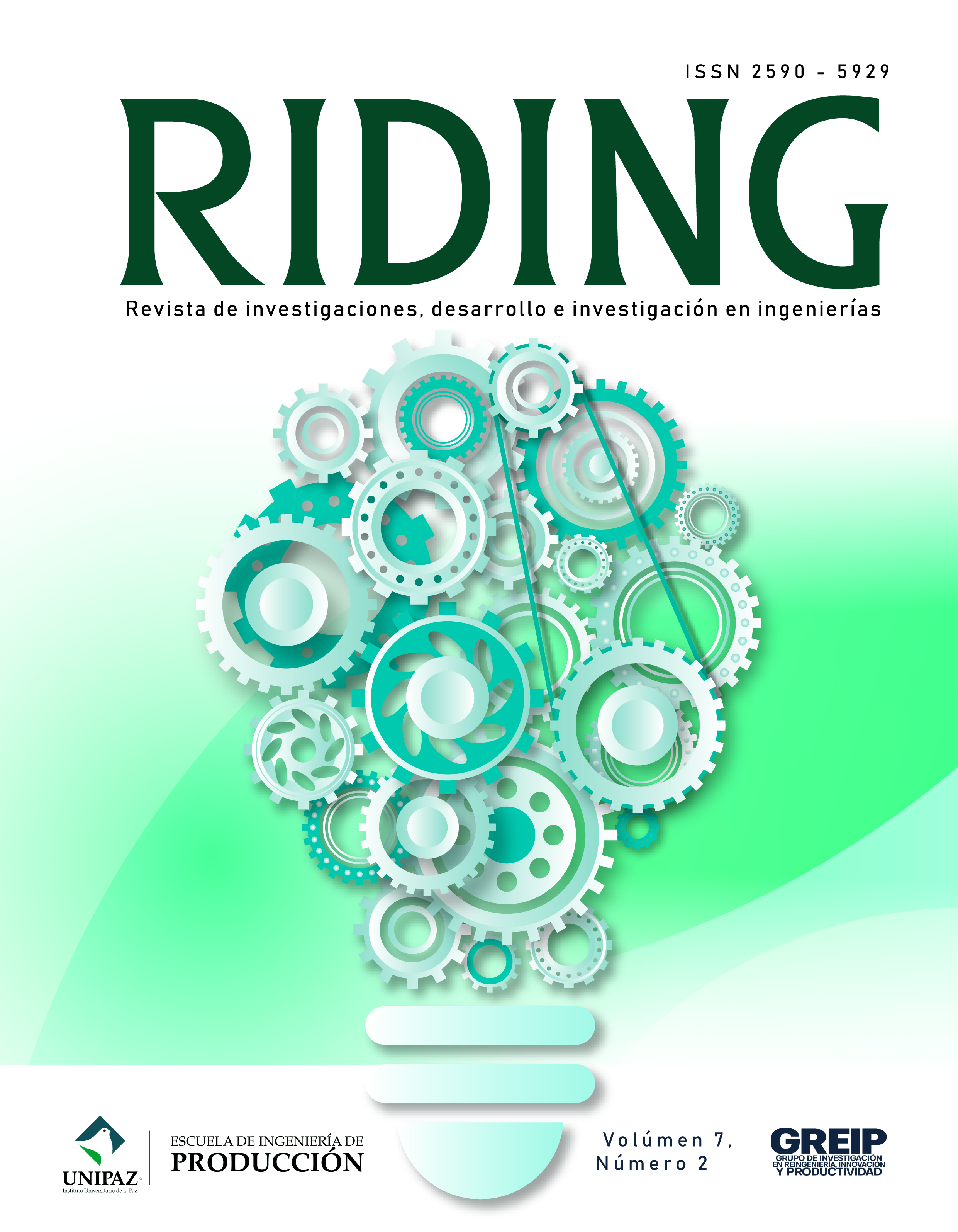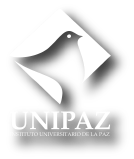Study of work absenteeism for the period January 2017 to June 2018 of the Instituto Universitario de la Paz (UNIPAZ)
Keywords:
Work accident, work absenteeism, common disease, occupational disease, medical disability, work permit.Abstract
This study is the product of a quantitative investigation of descriptive scope and of a Non-Experimental Transversal Deductive nature, whose objective allowed us to describe work absenteeism in employees linked by payroll of the University Institute of Peace, in the city of Barrancabermeja - Santander, and classified by the institute as administrative and teaching staff, during the period January 2017 - June 2018. For data collection, second-source information was used, provided by the Institute's Human Management Office, thus building a database that grouped all the variables, such as: gender, dependency, type of payroll, days of absence, type of event that generates the absence, medical classification of disabilities, among others, and that were the input for the statistical analysis; Therefore, a multivariate descriptive analysis was carried out, where the indicators were calculated
Colombian Technical Standards NTC-3701 and NTC-3793, at the time of the investigation the resolution was still in force, but at the date of publication of the article resolution 1111 of 2017 has been repealed by resolution 0312 of 2019. The means used to collect and process the information is a computer tool, of its own authorship, developed in Microsoft Excel, thus providing reliability in the results of the data obtained, presenting the information through histograms, tables, graphs and tables, that of work absenteeism to show which were the predominant causes and the representation of the costs.
The study's conclusions reveal that health-related causes, such as illness and maternity, are the main reasons for absenteeism at the Institute. This suggests that the prevalence of illnesses leads to the initial absences. In addition, it was identified that personal leave is the main cause of non-health related absenteeism. The study population included all official employees who worked at the educational center between January 2017 and June 2018. An average of 235 absentee workers were identified, which meant 1,464 absences and 4,405 days of absence. Of these, 3,057 days were due to medical leave, and the majority of absentee employees were women.
References
(1) ADECCO (2018). VII INFORME ADECCO SOBRE ABSENTISMO LABORAL. [Sitio web]. Madrid. [Consulta: 01.08.18]. Disponible en https://adecco.es/wp content/uploads/2018/06/VII-Informe-Adecco-sobre-Absentismo-Laboral.pdf.
(2) ALQUIRICHE RUÍZ, Angélica Juliana. Estudio del ausentismo de origen común y laboral de los trabajadores de planta, administrativos y docentes ocasionales tiempo completo, del Instituto Universitario de la Paz, para el año 2016. Trabajo de grado Ingeniera en Higiene y Seguridad Industrial. Barrancabermeja. Instituto Universitario de la Paz. Escuela de Ingeniería de Producción. 2017.
(3) ASOCIACIÓN NACIONAL DE EMPRESARIOS DE COLOMBIA. [Sitio web]. Bogotá. ANDI. [Consulta: 03.03.18]. Disponible en http://www.andi.com.co/Home/Noticia/7 BAYCE FILLOY, María Cecilia, Ausentismo laboral en el personal de enfermería del Sanatorio Canzani, Tesis para obtener el grado de Licenciada en Enfermería. Universidad Católica del Uruguay; 2001. 56 p.
(4) BOADA I GRAU, Joan; VALLEJO, Raúl de Diego, AGULLÓ TOMÁS, Esteban, y MAÑAS RODRÍGUEZ, Miguel Ángel. El absentismo laboral como consecuente de variables organizacionales. Psicothema. 2005; 17:212-8
(5) BRAGULAT, Francisco. El absentismo nos enferma. La única manera de mejorar la salud de la empresa consiste en que ésta cuide a sus trabajadores. En EL PAIS. [Sitio web]. Madrid. [Consulta: 01.03.18]. Disponible en https://elpais.com/economia/2017/10/05/actualidad/1507213208_100503.html
(6) CARACOL RADIO. [Sitio web]. Bogotá. CARACOL. [Consulta: 03.03.18]. Disp. en http://caracol.com.co/radio/2017/11/22/economía/1511386504_118247.html COLOMBIA.
(7) CONGRESO DE COLOMBIA. Ley 100 de 1993 (diciembre 23). Por la cual se crea el sistema de seguridad social integral y se dictan otras disposiciones. En Diario Oficial No. 41.148 de 23 de diciembre de 1993. 122 COLOMBIA.
(8) CONGRESO DE LA REPÚBLICA. Ley 1562 de 2012 (julio 11). Por la cual se modifica el Sistema de Riesgos Laborales y se dictan otras disposiciones en materia de Salud Ocupacional. En: Diario Oficial 48488 del 11 de julio de 2012.
(9) COLOMBIA. CONGRESO DE COLOMBIA. Ley 1822 de 2017 (enero 4). Por la cual se incentiva la adecuada atención y cuidado de la primera infancia, se modifican los artículos 236 y 239 del Código Sustantivo de Trabajo y se dictan otras disposiciones. En Diario Oficial No. 50.106 de 4 de enero de 2017. COLOMBIA.
(10) INSTITUTO DE SEGUROS SOCIALES. Resolución 2266 de 1998 (agosto 6). Por la cual se reglamenta el proceso de expedición, reconocimiento, liquidación y pago de las prestaciones económicas por incapacidades y Licencias de Maternidad en el Instituto de Seguros Sociales. En Diario Oficial No. 43.362, del 13 de agosto de 1998. COLOMBIA.
(11) MINISTERIO DE LA PROTECCIÓN SOCIAL. Resolución 2346 de 2007 (Julio 11). Por la cual se regula la práctica de evaluaciones médicas ocupacionales y el manejo y contenido de las historias clínicas ocupacionales. En Diario Oficial 46691 de julio 16 de 2007. COLOMBIA.
(12) MINISTERIO DE LA PROTECCIÓN SOCIAL. Resolución 2646 de 2008 (Julio 17). Por la cual se establecen disposiciones y se definen responsabilidades para la identificación, evaluación, prevención, intervención y monitoreo permanente de la exposición a factores de riesgo psicosocial en el trabajo y para la determinación del origen de las patologías causadas por el estrés ocupacional. En Diario Oficial 47059 de julio 23 de 2008. COLOMBIA.
(13) MINISTERIO DE SALUD. Resolución 1895 de 2001 (noviembre 19). Por la cual se adopta para la codificación de morbilidad en Colombia, la Clasificación Estadística Internacional de Enfermedades y Problemas Relacionados con la Salud - Décima revisión. COLOMBIA.
(14) MINISTERIO DE SALUD Y PROTECCIÓN SOCIAL. Decreto 780 de 2016 (mayo 6). Por el cual se expide el Decreto Único reglamentario del Sector Salud y Protección Social. En Diario Oficial No. 49.865 de 6 de mayo de 2016.
(15) ESPINOSA RESTREPO, María Teresa. Ausentismo laboral (tesis). Bogotá: Universidad El Bosque. p. 22.
(16) HAMOUI, Yamile; SIRIT, Yadira y BELLORIN Mónika. Absentismo laboral del personal administrativo de una universidad pública venezolana, en: Salud de los Trabajadores, Vol. 13, Nº 2, Julio - diciembre de 2005.
(17) HERAS BORRERO, Francisco Manuel de las. El absentismo laboral, sus causas y tratamiento jurídico. Revista de política social. Madrid, 1982. Vol. 136.1982, p. 191-199 HERNÁNDEZ
(18) SAMPIERI, Roberto; FERNÁNDEZ COLLADO, Carlos y BAPTISTA LUCIO, Pilar. Metodología de la investigación. McGraw Hill Interamericana de México, S.A. de C.V. 1997.
(19) SILVESTRINI RUÍZ, María y VARGAS JORGE, Jackeline. Fuentes de información primarias, secundarias y terciarias. 2008. [Consulta: 01.03.18]. Disponible en http://www.ponce.inter.edu/cai/manuales/FUENTES-PRIMARIA.pdf
(20) VALLADARES, A., DILLA, T., y SACRISTÁN, J.A. (2008). La depresión: una hipoteca social. Últimos avances en el conocimiento del coste de la enfermedad. Actas Españolas de Psiquiatría, 36. [Consulta: 28.02.18]. Disponible en
Published
Issue
Section
License

Este obra está bajo una licencia de Creative Commons Reconocimiento-NoComercial-CompartirIgual 3.0 Unported.


